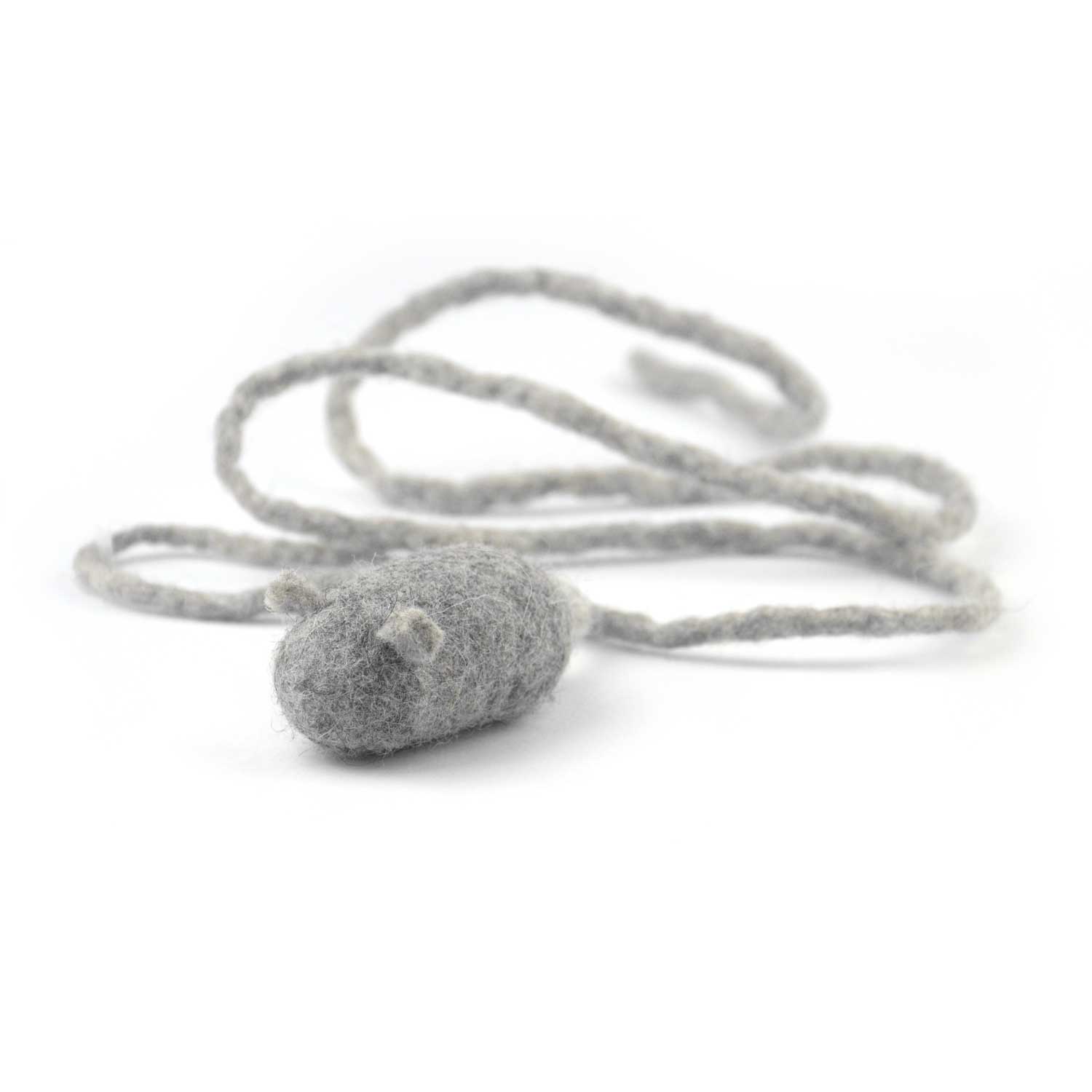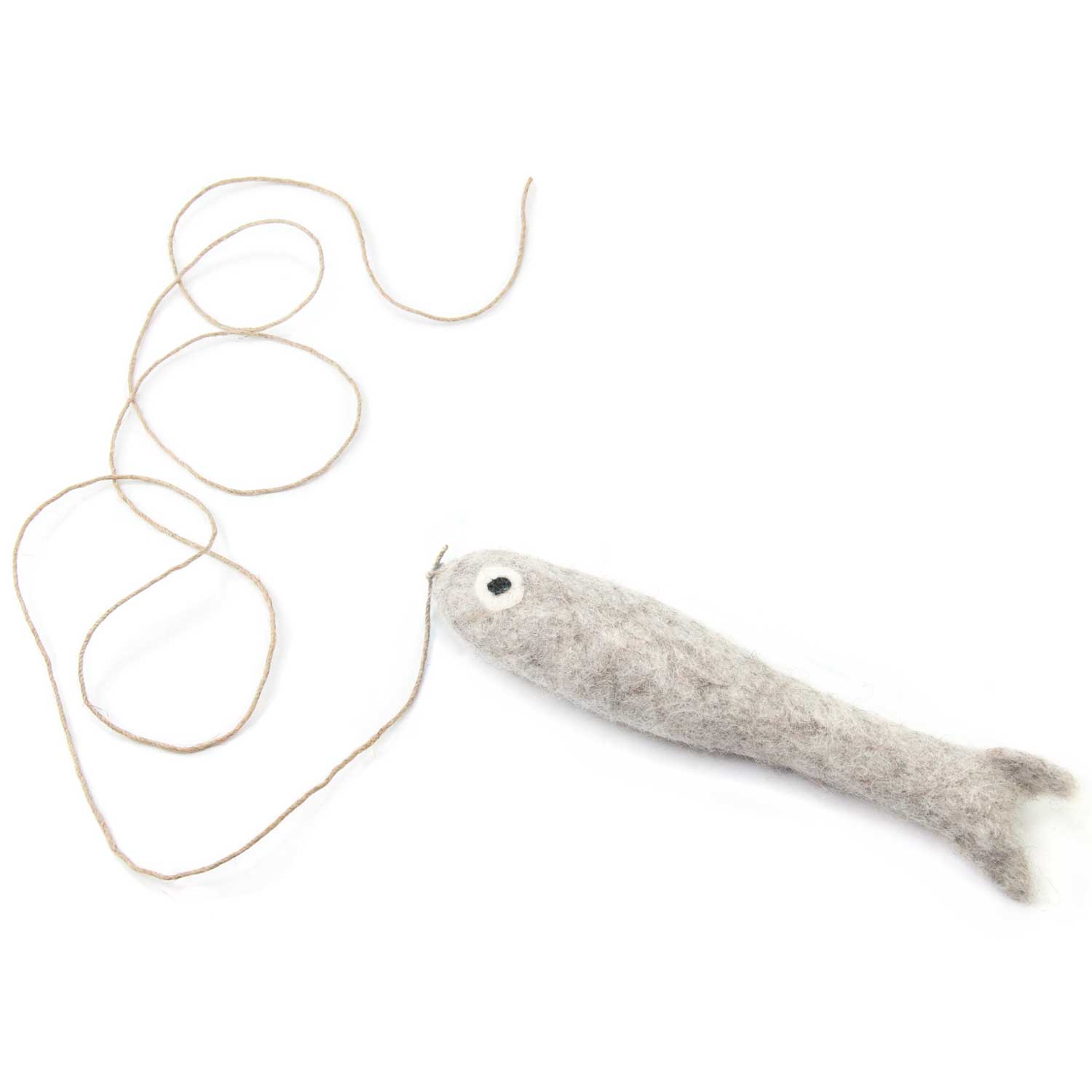Why do cats scratch?
From the curious kitty to the quiet house cat: scratching is an instinct and an essential behavior for every cat. The scratching behavior is part of your cat's daily routine and has a variety of reasons. We'll explain why scratching is essential for your cat and give you tips for getting your purring four-legged friend used to scratching furniture such as scratching posts to protect your furniture from the sharp claws.
That's why cats scratch
Cat scratching is not always an expression of anger and dissatisfaction. It is a normal behavior for cats and important for their health and well-being. Cats scratch for these reasons:
- Claw care: Scratching is part of your cat's hygiene. Various scratch marks can serve as a kind of file. Sharpening removes dead layers, which keeps the nails healthy and sharpened.
- Defense: Sharpening the cat's claws, in turn, is important for their defense. In the wild, cats use their claws to protect themselves from predators. Cats also extend their claws to defend and protect their territory.
- Hunting: When hunting, sharp cat's claws help cuddly tigers to grab and hold on to their prey. Their claws also allow them to climb trees while hunting or fleeing from predators.
- Territory marking: Scratching is also a deep-rooted behavior that serves to mark the territory. By scratching, cats leave visual markings and scents from their paws to signal their territory to other conspecifics.
- Stretching: When scratching, cats also stretch their muscles in their front paws and back. So, scratching contributes to well-being, because stretching feels good and relaxes.
- Boredom and stress: Scratching is also important for your cat, as it can relieve stress through this behavior. If your cat scratches excessively, it could be because they're stressed: Maybe there's too much hustle and bustle in your home, making it difficult for your cat to relax. But the opposite can also be true – boredom can also be an expression of pronounced scratching.
Why do cats scratch furniture?
When living with cats, furniture often suffers from the scratching attacks of our fluffy four-legged friends. Cat owners will know it: The floor, the doors, the walls, the carpets or the wallpaper are not always safe from the sharp endogenous weapons of our house cats.
If your cat repeatedly chooses pieces of furniture such as the sofa as scratching points, it either does not have enough opportunities to play and scratch in the form of scratching posts, scratching trunks or scratching walls or these do not meet its requirements to sharpen its claws optimally. Scratching furniture should be
- resistant and
- be stable, and
- provide a good surface for scratching.
Because most of our furnishings offer these features, they are often attractive to your cat. To distract them from these, our stylecats scratching posts are a good choice, as they have the characteristics of an ideal scratching furniture.
Cats get out of the habit of scratching furniture
Breaking the habit of scratching in unwanted places requires patience and understanding of your cat's needs. With our tips, you can protect your furniture from the scratch marks of your cat:
- Optimal scratching possibilities: The first step is to purchase sufficiently suitable scratching opportunities. Make sure that the scratching furniture is stable and does not wobble so that it can withstand wild scratching attacks.
- Materials: Scratching surfaces made of materials such as sisal or felt and robust materials of the trunk such as wood are ideal for scratching furniture.
- Location: In order for your velvet paw to use its scratching furniture, it is important where it stands. Place the piece of furniture so that your cat has a good overview of your home. You can also place the scratching post by the window so that your cat can see the garden or the street. Confined and secluded rooms are not suitable for setting up your pet's scratching furniture.
- Arouse interest: Your cat will be particularly attentive to its scratching furniture if you rub the scratching areas with catnip, for example , which can have a calming effect on your animal or awaken its instinct to play. You can also make your cat aware of their cat furniture by hanging toys on it.
- Positive reinforcement: Rewards help you to make your cat more attractive to use their new scratching furniture and to break the habit of scratching your furniture. As soon as your furry friend uses his new scratching opportunity, you can give him rewards in the form of food or your attention - this will encourage the desired behavior. Penalties, on the other hand, can damage trust and cause stress.
If it is difficult to redirect your pet's scratching behavior, a veterinarian can advise you and rule out health reasons.
Why do cats scratch people?
Maybe you've already experienced it with your kitty: You're in the middle of a cozy cuddle session, but suddenly the fun is over, your cat extends its claws and scratches your hands. There can be various reasons why cats scratch people :
Hunting instinct:Owners of indoor cats in particular will be familiar with this impetuous scratching behavior: They cannot live out their natural hunting instinct in the same way as outdoor cats and like to pounce on everything that moves. To meet your indoor cat's needs, you should play with them several times a day or provide them with toys that they can chase and pack.
- Habituation:
We often find it cute when kittens gnaw on our hands and feet and therefore allow it with the little balls of fur. When the kittens grow up, however, they also get sharper and sharper claws and teeth, with which nibbling and scratching on our skin can hurt quite a bit. However, if the cats have learned as kittens that they are allowed to nibble on humans, they often do not stop at this as an adult house cat.
- Fear:
It's also possible for your cat to scratch you or visitors out of fear. Maybe your cat has had a bad experience in the past that they are reminded of in certain situations and therefore want to protect themselves by scratching out of fear . Keep a close eye on your cat during these moments and try to figure out if they're afraid of something.
- Ache:
If your cat is touched in places that hurt him, he can also express this by scratching. If you suspect pain in your cat, you should definitely go to the veterinarian and have the reasons clarified.
- Misunderstood body language:
Your cat usually signals to you through body language before scratching that he doesn't like a touch. If your cat purrs or even has its eyes closed while petting it, it enjoys your attention and touch. However, if she looks at you intensely, it can be an expression of tension or aggression. Even if your furry friend puts his ears back, you should interrupt the stroking. If you pay attention to your darling's body language and respect his boundaries, nothing stands in the way of a harmonious coexistence.
Conclusion: Scratching is part of a happy and healthy cat's life. Therefore, you should never completely break your cat's habit of scratching. However, you can use suitable scratching furniture to control what your cat scratches and thus protect your furniture from unwanted immortalizations of your house cat. Were there any scratching accidents at the beginning of your life with your cat? Feel free to tell us what your cat has already done and how it worked for you to break the habit of random scratching. We are excited!











